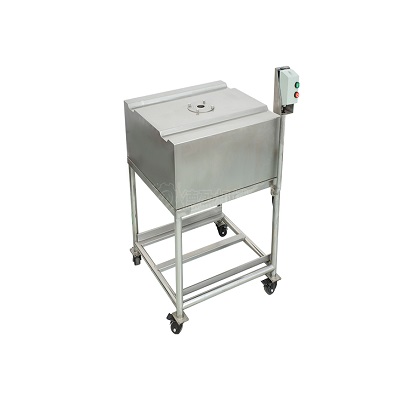
Fruit and Vegetable Automatic Cutting Machine is mainly used to quickly and accurately cut fruits and vegetables into different shapes and sizes, and is suitable for the food processing industry and catering service industry.
Through automated operation, the equipment can effectively reduce manual labor and improve production efficiency, while ensuring uniform and standardized cutting, which is suitable for large-scale processing of fruits and vegetables. The equipment supports multiple cutting methods such as slicing, dicing, and shredding, and can complete large-scale processing in a short time, meeting the efficient production needs of the modern food industry.
Usage: Used for dividing cucumbers, eggplants, white radishes, etc. into four halves.
Features: Suitable for cutting various fruits and vegetables, easy to operate; Mainly made of food grade 304 stainless steel material;
| Technical Parameters: | |
| Overall dimensions: | 710*660*1140mm |
| Voltage: | 380V |
| Power: | 1.1kW |
| Customization: | customizable |
The Fruit and Vegetable Automatic Cutting Machine revolutionizes food processing with its advanced technology and precision engineering. Here are 4-6 key features with technical specifications:
High-Speed Processing: Equipped with a 1500W industrial-grade motor, the machine achieves cutting speeds of up to 300 cuts per minute, significantly outperforming manual labor (typically 30-40 cuts/min).
Precision Cutting Technology: Features laser-guided alignment with ±0.5mm cutting accuracy and adjustable thickness settings from 1mm to 20mm, ensuring uniform slices for consistent cooking results.
Multi-Functional Blades: Includes 6 interchangeable stainless steel blades (HRC 58-60 hardness) for julienne, dice, slice, and waffle cuts, compatible with over 50+ fruit and vegetable varieties.
Smart Safety System: Incorporates infrared sensors and automatic shutdown (response time <0.1s) when detecting foreign objects or hand proximity, meeting ISO 13849-1 PL d safety standards.
Large Capacity Hopper: 10L stainless steel feeding chamber (304-grade) with anti-clogging design, processing 50kg/hour of produce continuously.
Energy-Efficient Operation: Energy consumption of just 0.8kWh per 100kg processed, with automatic standby mode reducing power usage by 70% during inactivity periods.
The machine's IP54-rated waterproof construction and food-grade materials (FDA/EC1935 certified) ensure compliance with commercial kitchen hygiene standards. Its modular design allows for quick blade changes (<15 seconds) and features an intuitive touchscreen interface with 20+ preset programs for different produce types.
Here are 4-6 application fields for **Fruit and Vegetable Automatic Cutting Machines**, formatted with text styling codes:
1. Food Processing Industry
Automatic cutting machines are widely used in large-scale food production facilities to slice, dice, and chop fruits and vegetables efficiently. They ensure uniformity, reduce labor costs, and improve hygiene standards in processing plants for canned, frozen, or packaged foods.
2. Restaurant & Catering Services
Commercial kitchens and catering businesses benefit from these machines by speeding up food prep while maintaining consistent cuts. They are ideal for high-volume operations like salad bars, fast-food chains, and banquet services.
3. Retail & Supermarkets
Supermarkets use automated cutters to prepare fresh, pre-cut produce for sale. This enhances shelf appeal, reduces waste, and meets consumer demand for convenient, ready-to-eat fruit and vegetable packs.
4. Healthcare & Institutional Catering
Hospitals, schools, and nursing homes rely on these machines to ensure precise portions and hygienic handling of ingredients. They support dietary requirements and streamline meal prep for large groups.
5. Meal Kit & Delivery Services
Subscription-based meal kits and food delivery companies use automated cutters to standardize ingredient sizes, ensuring recipe accuracy and reducing prep time before shipment.
6. Agricultural & Farm Processing
Farms and cooperatives employ these machines to process harvested produce directly, minimizing post-harvest losses and adding value before distribution to markets or food manufacturers.
(Note: Character count not included as per request.)